#veg pulao recipe
Text
pudina rice
#food#dinner#recipes#cooking#lunch#flavoured#flavour#flavor#pudina#pulao for dinner#pulao homemade#pulao recipes#veg pulao recipe
4 notes
·
View notes
Text
Ghee Rice Recipe | खड़ा मसाला पुलाव | Veg Khada Masala Pulao
Ghee Rice Pulao or Khada masala pulao is a classic Indian dish made with a lot of Indian spices such as cumin, cardamom, cinnamon, etc along with some dry fruits that add to its flavour.

Full recipe video 👉 Ghee Rice / Khada masala pulao
#mommyskitchenstory#khada masala pulao#pulav#vegrecipe#veganfood#veg pulao recipe#ghee Rice#dry fruit pulao#fried rice recipe#comfort food#food photography#foodblogger#easytocook#recipes#homemade#youtube#video recipes
1 note
·
View note
Text
देखें: मसाला वेज पुलाव कैसे बनाएं (नुस्खा वीडियो अंदर)
देखें: मसाला वेज पुलाव कैसे बनाएं (नुस्खा वीडियो अंदर)
आइए सहमत हैं, खाना बनाना अक्सर व्यस्त हो जाता है, खासकर सप्ताह के दिनों में। काम का प्रबंधन और रसोई के काम भारी पड़ जाते हैं। और इसलिए, हम आसान रास्ता तलाशते हैं। पहली बात जो हमारे दिमाग में आती है वह है खाना ऑर्डर करना, जो निश्चित रूप से एक स्थायी विचार नहीं है। चिंता न करें, हमेशा की तरह, हमें आपकी पीठ मिल गई है। यदि आप हमसे पूछें, तो हम घर का बना खाना पसंद करते हैं जो जल्दी, बिना झंझट के और…
View On WordPress
0 notes
Text
veg pulao recipe in hindi। Step by step।
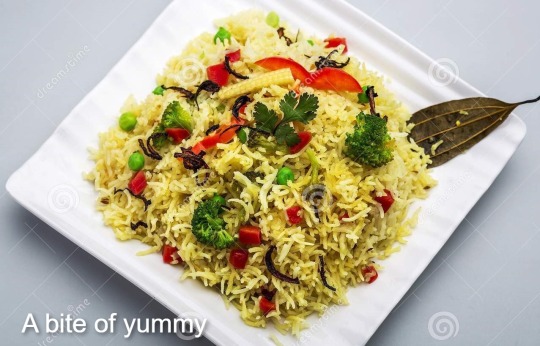
step-1
सबसे पहले आप चावल को ले फिर 15 मिनट तक भिगोए और किसी एक बरतन मे डालकर अच्छे से धो लें फिर उनमे से सारे पानी को निकाल दे।
step-2
इतना करने के बाद आप एक कुकर ले उसमे सामग्री के अनुसार एक साथ घी और तेल कुकर मे डालकर मिडीयम गैस पर गरम होने दे। गरम होने के बाद उसमे
तेज पत्ता
लौंग
दालचीनी डाल दे और लगभग 25- 30 सेकंड तक भुने।
फिर इसमे बारीक कटी प्याज को डालें और लगभग 2 से 3 मिनट तक हल्के भूरा होने तक भूने।
step-3... read more -- https://www.abiteofyummy.online/2022/06/veg-pulao-recipe-in-hindi.html
0 notes
Video
youtube
વેજીટેબલ પુલાવ બનાવવાની રીત | પ્રેશર કૂકરમાં ટેસ્ટી વેજ પુલાવ બનાવવાની ર...
#youtube#veg pulao recipe in Gujarati pulao recipe in cooker how to make veg pulao at home vegetable pulao banavani rit veg masala bhat recipe veg pu
0 notes
Text
Vegetable Pulao Recipe | How to make veg Pulao
Vegetable Pulao Recipe
Vegetable pulao, also known as veg pulao, is a popular Indian rice dish made with rice and a mix of assorted vegetables. If you are looking for simple, one-pot comfort food that’s easy to make and tasty, then You can also make this.
This is loaded with lots of vegetables, and the best part is you can add any vegetables you want to make this Pulao.
This Vegetable Pulao…
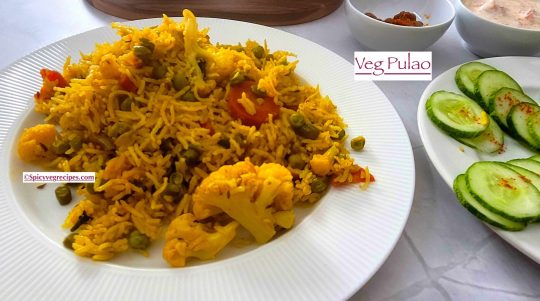
View On WordPress
#best veg pulao recipe#easy#Easy Recipes#Easy Veg Pulav Recipe#How to cook#how to make pulao#how to make pulao in Pressure Cooker#how to make veg Biryani#how to make veg pulao#How to make vegetable Biryani#How to make Vegetable Pulao#Indian recipe#matar pulav#mixed vegetable Pulao#pilau#pilau recipe#Pressure Cooker Pulao#pressure cooker pulao recipe#pulao#pulao in pressure cooker#pulao recipe#Pulao Recipe in Hindi#pulav recipe#Quick Recipes#Regional Indian Cuisine#restaurant style veg pulao#Simple Veg Pulao Recipe#Simple vegetable pulao#step by step#veg Biryani recipe
0 notes
Text
Vege Pulao Restaurant Style | Simple Veg Pulao Recipe | Veg Pulao Recipe Sanjeev Kapoor
So today we have brought for you the recipe of simple and tasty Veg Pulao and also read what are the things needed to make Veg Pulao.
So let's Start the Recipe of Veg Pulao
How To Make Delicious Veg Pulao at Home : Veg Pulao Recipe in English Step by Step
Step.1 First of all put oil in a pan and heat the oil then after the oil is heated add 1 black cardamom and 7 or 8 black peppercorns and a little cumin and chopped 3 or 4 green chilies and onions and add onions to the pan. Cook the onions in the pan till light brown Read More

1 note
·
View note
Text
History of Veg Pulao
Veg Pulao is a popular dish in India and is a type of pilaf made with vegetables and rice.
It is believed that pulao originated in the Middle East and was brought to India by the Mughals. The Mughals were known for their love of good food and were great connoisseurs of rice dishes. They introduced many rice dishes to India, including biryani, pulao, and kebabs.
Pulao was initially a royal dish…
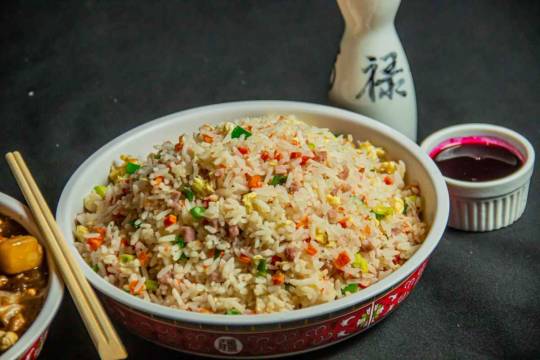
View On WordPress
#Lifestyle#food#food articles#Healthy veg pulao#history of pulao#mix veg pulao#recipe of pulao#Veg pulao
1 note
·
View note
Text
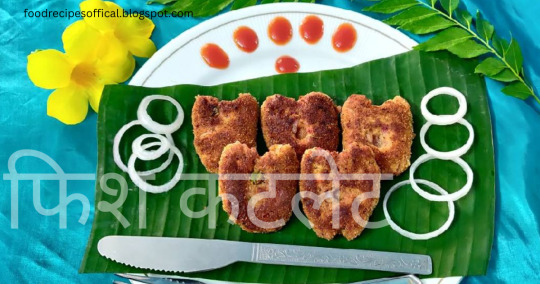
In Food Recipes we teach you how to make fish cutlets. Cutlets are a typical starter in French cuisine. In Indian cuisine, a cutlet is typically a mixture of mashed vegetables (potatoes, carrots, beans) or cooked meat (mutton). , refers to a stuffing of chicken or fish) that is fried with a batter/covering. The meat is cooked with spices – onions, cardamom, cloves, cinnamon, coriander (cilantro), green chillies, lemon and salt. It is then dipped in egg mixture or corn starch and then in bread crumbs (see also breaded cutlet), and fried in ghee or vegetable oil. Mostly chicken and mutton cutlets are very popular snacks in eastern part of India especially in Kolkata. If you are a fish lover then this recipe is for you. Many of you must have tried fish pakora, have you ever eaten fish cutlet. It is very easy to make them. These are crispy fish prepared in potatoes and spices and deep fried. It will prove to be a great snack during the party. Mixing with spices, coating with egg, coating with bread crumbs and corn flour and deep frying. Read more
#Garlic Spinach#Veggie Puffs#Mix Veg#Roasted Potato#Malai Pyaaz#Tawa Pulao#Paneer Tikka#Cheese stick snacks#Bharwan Tamatar#Poha#Paneer butter masala#Thandai Phirni#Fenugreek Muthia#Chilli paneer#https://foodrecipesoffical.blogspot.com/2023/02/food-recipes-samosa.html#Food Recipes समोसा#Samosa#lunch
0 notes
Text
youtube
#veg biryani#healthy recipes#sunday special food#healthy food#meal prep#homecooking#foodlover#veg pulao#Youtube
1 note
·
View note
Text
Veg Pulao is one of the most common vegetarian rice recipes in India, known by various names such as Pilaugh or Pulao. When you want a helly spice-free meal, vegetable pulao is a perfect menu the rice. Pullo is a variety of types of the type such as Taava Pulao, Coconut milk pulao, Rub pulao, Jerda pulao, Kashmiri Pulao, Yaka Pulao, and Chicken Pulao. There are some different ways to make a vegetable pulao recipe. Each region has different ways to make it.
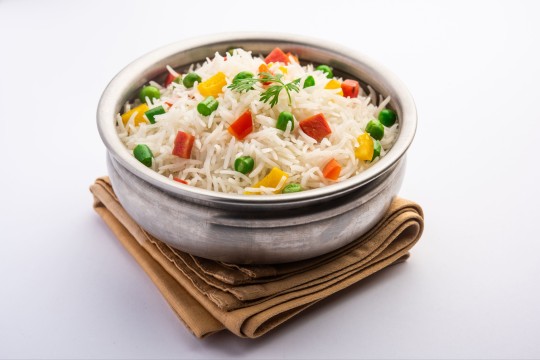
0 notes
Photo
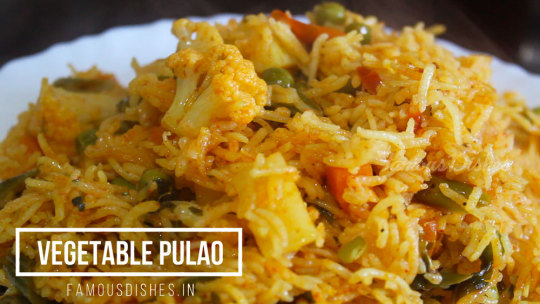
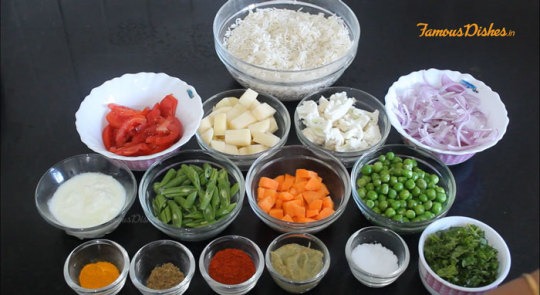


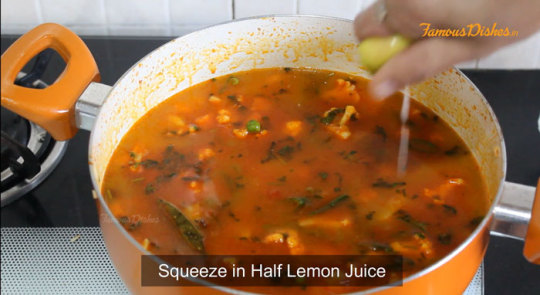

A #delicious Veg Masala Pulao #dish made from basmati rice, vegetables, spices and herbs. It’s easy to cook and takes less than 30 minutes to prepare.
Checkout Our Detail Recipe ➡️ https://famousdishes.in/recipe-veg-pulao-how-make-vegetable-pulao/
Checkout recipe video ➡️ https://youtu.be/hCUnmvSkUjY
#VegMasalaPulao
#VegetablePulaoRecipe
#PulaoRecipe
0 notes
Text

Winter Special Matar pulao recipe- A comfort food for your lazy winter meals. ☺️
Full recipe link 👉 Matar Pulao Recipe Video
#matar pulao#pulav recipe#veg pulao#peas pulao#green peas pulao#matar pulav#pressure cooke recipe#one pot recipe#foodblogger#mommyskitchenstory#vegrecipe#easytocook
2 notes
·
View notes
Text
Mughlai Pulao Recipe: घर पर बनाएं काजू और बादाम वाला 'मुगलई पुलाव', जिंदगीभर नहीं भूल पाएंगे स्वाद
Mughlai Pulao Recipe: घर पर बनाएं काजू और बादाम वाला ‘मुगलई पुलाव’, जिंदगीभर नहीं भूल पाएंगे स्वाद
मुगलई पुलाव रेसिपी (Mughlai Pulao Recipe): अब तक आपने बिरयानी और पुलाव कई बार खाया होगा. कई लोगों को पुलाव खाना बेहद पसंद होता है. क्या आपने कभी ‘मुगलई पुलाव’ ट्राई किया है? चिकन, काजू, बादाम और पिस्ता से सजा हुआ मुगलई पुलाव खाने के बाद आप इसका स्वाद हमेशा याद रखेंगे. वैसे तो अक्सर लोग इसे रेस्टोरेंट में जाकर खाते हैं, लेकिन आप स्वादिष्ट मुगलई पुलाव घर पर भी तैयार कर सकते हैं. आज आपको घर पर मुगलई…
View On WordPress
#food#food recipe#Mughlai Biryani#Mughlai Pulao#Mughlai Pulao Ingredients#Mughlai Pulao Recipe#Non-Veg Dish#फूड#मुगलई पुलाव#लाइफस्टाइल
0 notes
Link
Hi Friends, I'm Neeharika. Today I am preparing one of the quick and tasty Cluster Beans Rice. It is very easy, tasty and quick Lunch Box recipe. Hope you try this amazing Tasty Goru Chikkudukaya Rice / Gokarakaya Rice at your home.
#quick Lunch Box recipe#Lunch Box#Goru Chikkudukaya Rice#Gokarakaya Rice#Cluster Beans Rice#simple and tasty#recipes#veg pulao#healthy recipes#tasty food#foodies#veg foodies#yummy#lunch box recipe
0 notes
Text
INDIAN FOODS IN USA
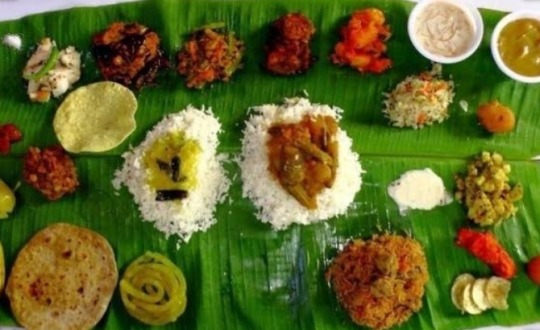
Hi Readers, welcome to indianfoodinusadotcom, Here you can learn all about Indian foods, recipes and all about INDIAN FOOD like {ABOUT INDIAN FOOD}
{HISTORY}
{VEDIC AGES}
{ANTIQUITY}
{FOOD MENTIONED IN ANECIENT INDIAN SCRIPTURE}
{MIDDLE AGE OF 16th CENTURY}
{COLONIAL PERIODS}
{INGREDIENTS}
{RECIPES}
LIKE (a) chicken Biryani (b) mutton biryani (c)Butter chicken (d) chicken tikka masala (e) veg biryani (f) Palak paneer (g) Matar paneer (h) chutneys, AND Many more.
ABOUT INDIAN FOOD in USA
You will get know more about the best restaurants Around the world
INDIAN FOOD consists of a variety of regional and traditional cuisines native to India. Given the diversity in soil, climate, culture, ethnic groups, and occupations, these cuisines vary substantially and use locally available spices, herbs, vegetables, and fruits.
Indian food is also heavily influenced by religion, in particular Hinduism and Islam, cultural choices.
Historical events such as invasions, trade relations, and colonialism have played a role in introducing certain foods to this country. The Columbian discovery of the New World brought a number of new vegetables and fruit to India. A number of these such as potatoes, tomatoes, chillies, peanuts, and guava have become staples in many regions of India.
INDIAN FOOD has shaped the history of international relations; the spice trade between India and Europe was the primary catalyst for Europe's Age of Discovery.
Spices were bought from India and traded around Europe and Asia. INDIAN FOOD has influenced other cuisines across the world, especially those from Europe (especially Britain), the Middle East, Southern African, East Africa, Southeast Asia, North America, Mauritius, Fiji, Oceania, and the Caribbean.
HISTORY OF INDIAN FOOD NON-VEGETARIAN
INDIAN FOOD reflects an 8,000-year history of various groups and cultures interacting with the Indian subcontinent, leading to a diversity of flavors and regional cuisines found in modern-day India. Later, trade with British and Portuguese influence added to the already diverse INDIAN FOOD.
After 9000 BCE, the first period of indirect contact between the Fertile Crescent and Indus Valley civilizations seems to have occurred due to the Neolithic Revolution and the diffusion of agriculture. Around 7000 BCE, agriculture spread from the Fertile Crescent to the Indus Valley, and wheat and barley began to be grown. Sesame and humped cattle were domesticated in the local farming communities.
Mehrgarh is one of South Asia's earliest sites with evidence of farming and herding. From circa 4500 to 1900 BC the rulers of Lower Mesopotamia were Sumerians who spoke a non-Indo-European and non-Semitic language, may have initially come from India and may have been related to the original Dravidian population of India.
By 3000 BCE, turmeric, cardamom, black pepper and mustard were harvested in India.
From Around 2350 BCE the evidence for imports from the Indus to Ur in Mesopotamia have been found, as well as Clove heads which are thought to originate from the Moluccas in Maritime Southeast Asia were found in a 2nd millennium BC site in Terqa. Akkadian Empire records mention timber, carnelian and ivory as being imported from Meluhha by Meluhhan ships, Meluhha being generally considered as the Mesopotamian name for the Indus Valley Civilization.
VEDIC AGE
VEGETARIAN
The ancient Hindu text Mahabharata mentions rice and vegetable cooked together, and the word "pulao" or "pallao" is used to refer to the dish in ancient Sanskrit works, such as Yājñavalkya Smṛti. Ayurveda, ancient Indian system of wellness, deals with holistic approach to the wellness, and it includes food, dhyana (meditation) and yoga.
ANTIQUITY
Early diet in India mainly consisted of legumes, vegetables, fruits, grains, dairy products, and honey.
Staple foods eaten today include a variety of lentils (dal), whole-wheat flour (aṭṭa), rice, and pearl millet (bājra), which has been cultivated in the Indian subcontinent since 6200 BCE.
Over time, segments of the population embraced vegetarianism during the Śramaṇa movement while an equitable climate permitted a variety of fruits, vegetables, and grains to be grown throughout the year.
A food classification system that categorised any item as saatvic, raajsic, or taamsic developed in Yoga tradition. The Bhagavad Gita proscribes certain dietary practices.
Consumption of beef is taboo, due to cows being considered sacred in Hinduism.[14] Beef is generally not eaten by Hindus in India except for Kerala, parts of southern Tamil Nadu and the north-east.
PICKLES
FOOD MENTIONED IN ANECIENT INDIAN SCRIPTURE
While many ancient Indian recipes have been lost in history, one can look at ancient texts to see what was eaten in ancient and pre-historic India.
Barley—(known as Yava in both Vedic and Classical Sanskrit) is mentioned many times in Rigveda and other Indian scriptures as one of the principal grains in ancient India
Betel leaf—primary use is as a wrapper for the chewing of areca nut or tobacco, where it is mainly used to add flavour; may also be used in cooking, usually raw, for its peppery taste
Breadfruit—fritters called jeev kadge phodi in Konkani or kadachakka varuthath in Malayalam are a local delicacy in coastal Karnataka and Kerala
Chickpeas—popular dishes are made with chickpea flour, such as mirchi bajji and mirapakaya bajji
Curd—a traditional yogurt or fermented milk product, originating from the Indian subcontinent, usually prepared from cow's milk, and sometimes buffalo milk, or goat milk
Figs —cultivated from Afghanistan to Portugal, also grown in Pithoragarh in the Kumaon hills of India; from the 15th century onwards, also grown in areas including Northern Europe and the New World
Ghee—a class of clarified butter that originated in ancient India, commonly used in the Indian subcontinent, Middle-Eastern cuisine, traditional medicine, and religious rituals
Grape wine —first-known mention of grape-based wines in India is from the late 4th-century BC writings of Chanakya
Honey —the spiritual and supposed therapeutic use of honey in ancient India was documented in both the Vedas and the Ayurveda texts
Mango—the Jain goddess Ambika is traditionally represented as sitting under a mango tree
Mustard —brown mustard is a spice that was cultivated in the Indus Valley civilization and is one of the important spices used in the Indian subcontinent today
Pomegranate—in some Hindu traditions, the pomegranate (Hindi: anār) symbolizes prosperity and fertility, and is associated with both Bhoomidevi (the earth goddess) and Lord Ganesha (the one fond of the many-seeded fruit)
Rice—cultivated in the Indian subcontinent from as early as 5,000 BC
Rice cake—quite a variety are available
Rose apple—mainly eaten as a fruit and also used to make pickles (chambakka achar)
Saffron —almost all saffron grows in a belt from Spain in the west to Kashmir in the east
Salt —considered to be a very auspicious substance in Hinduism and is used in particular religious ceremonies like house-warmings and weddings; in Jainism, devotees lay an offering of raw rice with a pinch of salt before a deity to signify their devotion, and salt is sprinkled on a person's cremated remains before the ashes are buried
Sesame oil —popular in Asia, especially in Korea, China, and the South Indian states of Karnataka, Andhra Pradesh, and Tamil Nadu, where its widespread use is similar to that of olive oil in the Mediterranean
Sorghum—commonly called jwaarie, jowar, jola, or jondhalaa, sorghum is one of the staple sources of nutrition
Sugar—produced in the Indian subcontinent since ancient times, its cultivation spread from there into modern-day Afghanistan through the Khyber Pass
Sugarcane—the earliest known production of crystalline sugar began in northern India; the earliest evidence of sugar production comes from ancient Sanskrit and Pali texts
Turmeric —used widely as a spice in South Asian and Middle Eastern cooking
Middle Ages to the 16th Century
VEG DUM BIRYANI
During the Middle Ages, several Indian dynasties were predominant, including the Gupta dynasty. Travel to India during this time introduced new cooking methods and products to the region, including tea.
India was later invaded by tribes from Central Asian cultures, which led to the emergence of Mughlai cuisine, a mix of Indian and Central Asian cuisine. Hallmarks include seasonings such as saffron.
Colonial Period
The Portuguese and British during their rule introduced cooking techniques such as baking, and foods from the New World and Europe.
The new-world vegetables popular in cuisine from the Indian subcontinent include tomato, potato, sweet potatoes, peanuts, squash, and chilli. Most New World vegetables such as sweet potatoes, potatoes, Amaranth, peanuts and cassava based Sago are allowed on Hindu fasting days. Cauliflower was introduced by the British in 1822. In the late 18th/early 19th century, an autobiography of a Scottish Robert Lindsay mentions a Sylheti man called Saeed Ullah cooking a curry for Lindsay's family. This is possibly the oldest record of INDIAN FOOD in the United Kingdom.
INGREDIENTS
Staple foods of INDIAN FOOD include pearl millet (bājra), rice, whole-wheat flour (aṭṭa), and a variety of lentils, such as masoor (most often red lentils), tuer (pigeon peas), urad (black gram), and moong (mung beans). Lentils may be used whole, dehusked—for example, dhuli moong or dhuli urad—or split. Split lentils, or dal, are used extensively, Some pulses, such as channa or cholae (chickpeas), rajma (kidney beans), and lobiya (black-eyed peas) are very common, especially in the northern regions. Channa and moong are also processed into flour (besan).
Many Indian dishes are cooked in vegetable oil, but peanut oil is popular in northern and western India, mustard oil in eastern India, and coconut oil along the western coast, especially in Kerala and parts of southern Tamil Nadu, Gingelly (sesame) oil is common in the south since it imparts a fragrant, nutty aroma.
In recent decades, sunflower, safflower, cottonseed, and soybean oils have become popular across India, Hydrogenated vegetable oil, known as Vanaspati ghee, is another popular cooking medium, Butter-based ghee, or deshi ghee, is used commonly.
Many types of meat are used for Indian cooking, but chicken and mutton tend to be the most commonly consumed meats. Fish and beef consumption are prevalent in some parts of India, but they are not widely consumed except for coastal areas, as well as the north east.
The most important and frequently used spices and flavourings in INDIAN FOOD are whole or powdered chilli pepper (mirch, introduced by the Portuguese from Mexico in the 16th century), black mustard seed (sarso), cardamom (elaichi), cumin (jeera), turmeric (haldi), asafoetida (hing), ginger (adrak), coriander (dhania), and garlic (lasoon).
One popular spice mix is garam masala, a powder that typically includes seven dried spices in a particular ratio, including black cardamom, cinnamon (dalchini), clove (laung), cumin (jeera), black peppercorns, coriander seeds and anise star.
Each culinary region has a distinctive garam masala blend—individual chefs may also have their own. Goda masala is a comparable, though sweet, spice mix popular in Maharashtra. Some leaves commonly used for flavouring include bay leaves (tejpat), coriander leaves, fenugreek (methi) leaves, and mint leaves. The use of curry leaves and roots for flavouring is typical of Gujarati and South INDIAN FOOD.
2 notes
·
View notes